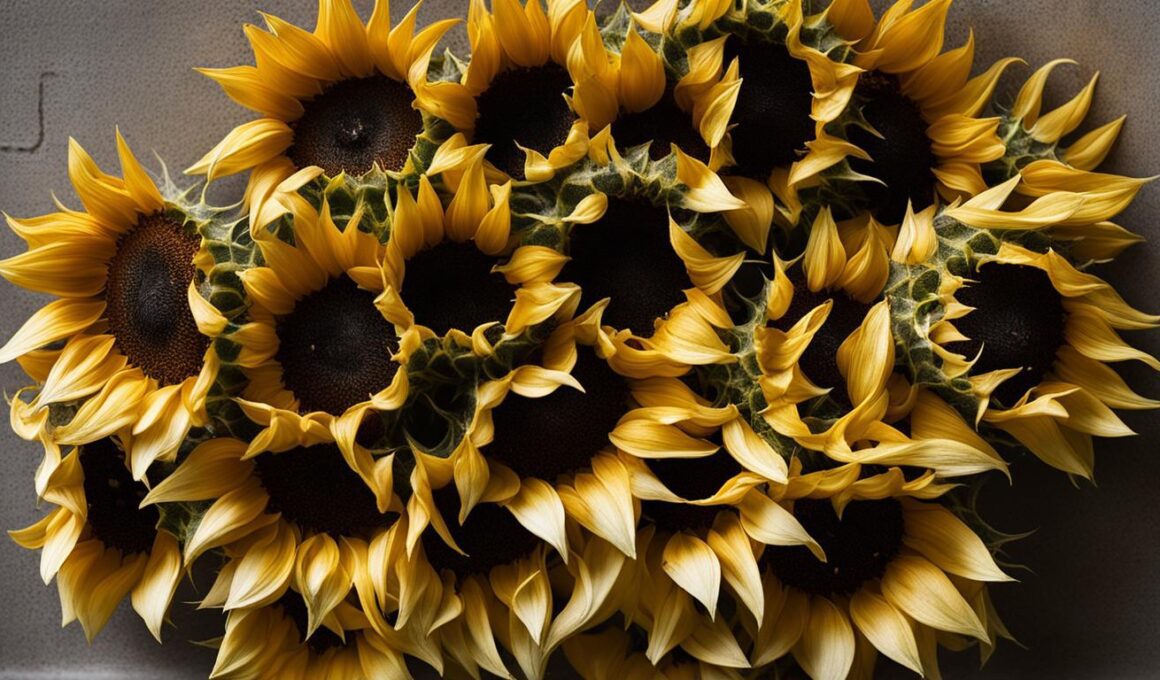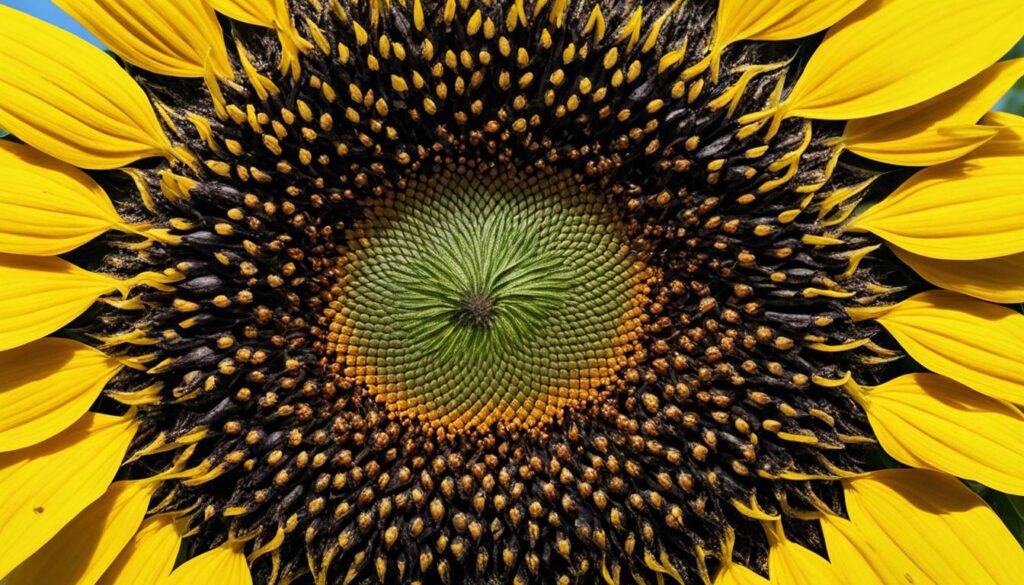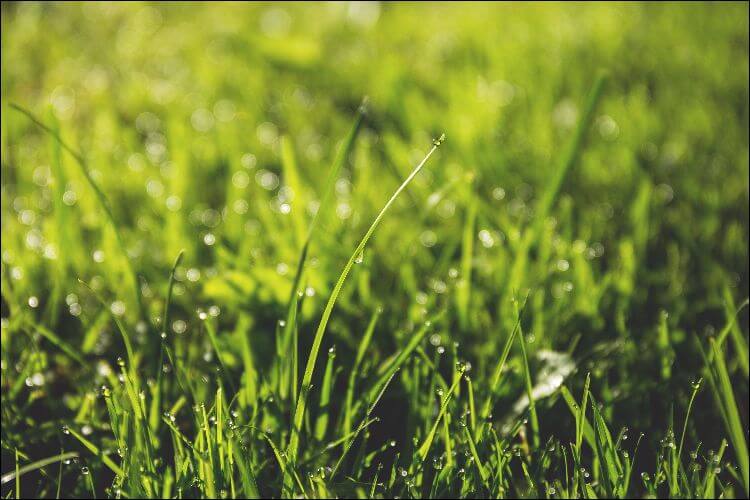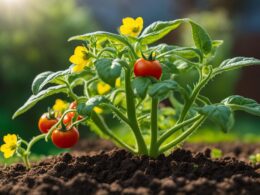If you have sunflowers in your garden, you have probably wondered how to dry sunflower seeds. Drying sunflower seeds allows you to harvest them for various purposes, from planting to snacking or even making homemade suet cakes for birds. In this guide, we will walk you through the process of drying sunflower seeds and provide you with valuable tips for harvesting them.
Harvesting sunflower seeds is the first step in the drying process. When the sunflowers have died back completely and the seeds are plump and loose, it is time to harvest them. Cut the stalk about a foot below the bloom and place it in a container.
If the sunflowers aren’t ready yet, you can tie the stalks together and hang them indoors to dry for 4-5 days. This ensures that the seeds have enough time to mature and dry properly.
Removing the Seeds
Once the sunflowers are ready to be harvested, it’s time to remove the seeds. Firmly rub the seed head over a bucket to loosen the seeds. If you are planning to re-plant or make suet cakes, rinse the seeds to remove any debris or residue.
After rinsing, allow the seeds to dry for several hours or overnight. This ensures that they are completely dry before storing them.
Storing the Seeds
Before storing the dried sunflower seeds, make sure they are fully dry. If there is any moisture left, it could lead to mold or spoilage.
Store the seeds in an airtight container in a cool, dry place. A pantry or a cool basement is ideal for storing sunflower seeds. Make sure to label the container with the variety and harvest date for future reference.
Following these steps will ensure that your sunflower seeds are properly dried and ready to use whenever you need them. Enjoy the benefits of homegrown sunflower seeds throughout the year!
When To Harvest Sunflower Seeds
Harvesting sunflower seeds at the right time ensures the best flavor and quality. To determine when your sunflower seeds are ready for harvest, look for these signs:
- The back of the sunflower head has turned brown
- The petals have withered and fallen off
- The seeds are plump and hard
- The shell is black-and-white striped or all black
Most sunflower varieties take about 80 to 140 days to mature after sowing. The ideal timing for sunflower seed harvest is from July through October, depending on your specific variety and growing conditions.
Timing is crucial when it comes to sunflower seed harvest. Harvesting too early can result in small and tasteless kernels, while waiting too long increases the chances of birds and other wildlife getting to the seeds first. It’s important to keep a close eye on your sunflowers as they approach maturity to ensure you harvest at the optimal time.
Drying and Storing Sunflower Seeds
Once you have harvested your sunflower seeds, it’s important to properly dry and store them to ensure their freshness and longevity. There are two methods you can follow: drying on the plant or drying indoors.
If you choose to dry the sunflower seeds on the plant, it’s essential to protect them from birds that may be tempted to snack on your harvest. Cover the sunflower blooms with a paper bag or fabric to create a barrier. This will safeguard the seeds while allowing them to continue drying in the natural environment.
If you prefer to dry the seeds indoors, begin by hanging the sunflower heads upside down in a well-ventilated space. This can be done in a garage, shed, or any area where there is good air circulation. Allow the flower heads to remain in this position until the back of the heads turn brown.
Once the sunflower heads have dried, it’s time to remove the seeds. One method is to rub the flower heads gently over a bucket, allowing the seeds to fall into it. Alternatively, you can use two flower heads together to effectively remove the seeds.
If desired, you can rinse the seeds to remove any remaining debris or dirt. After rinsing, spread the seeds out on a clean surface to dry for several hours or overnight. This step ensures that the seeds are completely dry before being stored.
When the seeds are completely dry, transfer them to an airtight container. Choose a container that is suitable for long-term storage and will protect the seeds from moisture and pests. A mason jar or airtight plastic container works well. Store the container in a cool, dry place such as a pantry or cupboard.
By following these steps, you can effectively dry and store your sunflower seeds for later use. Whether you plan to enjoy them as a nutritious snack or save them for replanting, properly dried and stored sunflower seeds will retain their quality and flavor.
Conclusion
Drying sunflower seeds offers a multitude of benefits and opens up a world of possibilities for their use. Whether you enjoy snacking on them, want to plant new sunflowers, or even create your own bird-friendly suet cakes, drying sunflower seeds is a simple process that yields great results. By following these tips for harvesting, drying, and storing sunflower seeds, you can take full advantage of the rewards offered by your summer garden.
One of the key benefits of drying sunflower seeds is the opportunity to enjoy them as a healthy snack. Sunflower seeds are packed with essential nutrients, including healthy fats, protein, and fiber. They make for a satisfying munch on the go, helping to curb cravings while providing a nourishing boost.
In addition to snacking, drying sunflower seeds enables you to save and plant them for future gardening endeavors. Planting sunflower seeds not only adds beauty to your garden but also serves as a habitat and food source for birds and other wildlife. By preserving and drying your sunflower seeds, you can continue to grow these stunning flowers season after season.
Furthermore, drying sunflower seeds allows you to create your own homemade suet cakes, a popular treat for birds. Simply grind the dried sunflower seeds into a fine powder and mix them with other bird-friendly ingredients such as peanut butter, cornmeal, and suet. This DIY approach ensures that the suet cakes are fresh, nutritious, and tailored to the specific preferences of your feathered friends.
Remember to follow the tips provided in this guide to ensure successful drying and storage of sunflower seeds. Proper timing of the harvest, thorough drying, and storing the seeds in a cool, dry place is the key to preserving their flavor, texture, and nutritional value. Labeling your containers with the variety and harvest date is a helpful practice for future reference and organization.
Drying sunflower seeds is not only a rewarding experience but also a sustainable way to make the most of your summer garden. So start harvesting those ripe sunflower heads, follow the steps outlined here, and enjoy the benefits that come with drying your own homegrown sunflower seeds. You’ll be delighted with the delicious results and the endless possibilities they offer.
Can the Method for Storing Pressed Flowers be Applied to Dry Sunflower Seeds as Well?
Yes, the method for storing pressed flowers efficiently can also be applied to dry sunflower seeds. Both require a dry and airtight environment to prevent mold and preserve the integrity of the material. Using the same technique for storing pressed flowers can help keep sunflower seeds fresh for longer periods.










